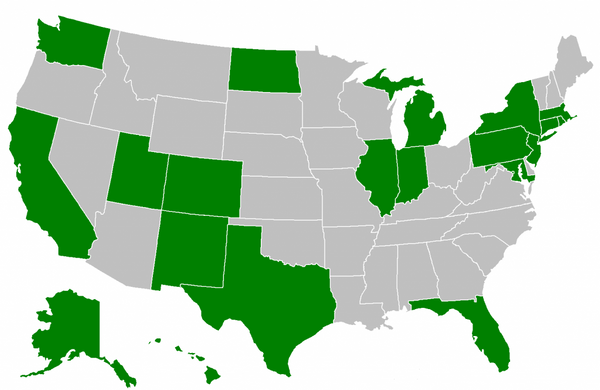Good Samaritan overdose prevention laws map
In the U.S. a slew of recent bills have been introduced or laws have been passed that improve access to naloxone. Naloxone is a safe, highly effective chemical compound that reverses the effects of opiates such as heroin. The US FDA first approved it in 1971. Naloxone is an opioid antagonist that blocks the brain cell receptors activated by heroin and other opioids, temporarily restoring normal breathing within two to three minutes of administration.
Naloxone works by taking up opioid receptor sites in the brain; it has a higher affinity for the opioid receptor sites and stays bound longer than the opioid activators that bind and release rapidly. It “tricks” the brain into thinking there are no opiates in the body. If someone is overdosing on an opiate, administering naloxone can speed up their breathing and temporarily bring them out of an overdose. Currently 8 states have naloxone access laws including Washington, California, Connecticut, Maryland, New Mexico, New York, Illinois, and Rhode Island and bills are pending in Colorado, Kentucky, Massachusetts, New Jersey, New Mexico, North Carolina, Oregon, Vermont and West Virginia.
Read the full article.
Keep up-to-date with drug policy developments by subscribing to the IDPC Monthly Alert
